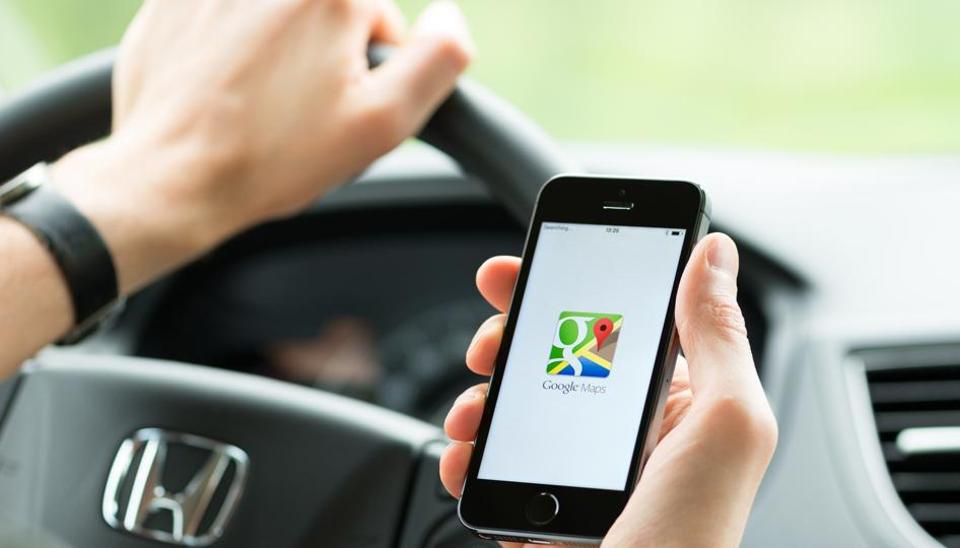How Google Maps recognises traffic
A Berlin artist’s hack to fool Google Maps was clever, but it raises questions about how Google Maps actually tracks and responds to data it collects. If 99 phones in a wagon can throw the app off, how accurate is it actually?

An artist from Berlin, Simon Weckert, recently hacked Google Maps by creating a traffic jam with 99 iPhones in a small cart. All the smartphones were running Google Maps as Weckert dragged it around the city and fooled the Google Maps into thinking that there was a traffic jam.
Weckert shared a video of this hack and the description went: "99 smartphones are transported in a handcart to generate virtual traffic jam in Google Maps.Through this activity, it is possible to turn a green street red which has an impact in the physical world by navigating cars on another route to avoid being stuck in traffic."
Google responded to his hack by saying that their systems have become smart enough to distinguish between cars and motorcycles but not "cracked travelling by wagon".
"Traffic data in Google Maps is refreshed continuously thanks to information from a variety of sources, including aggregated anonymized data from people who have location services turned on and contributions from the Google Maps community," a Google spokesperson said.
Also Read: Google responds after user hacks Google Maps traffic flow with 99 smartphones
"We've launched the ability to distinguish between cars and motorcycles in several countries including India, Indonesia and Egypt, though we haven't quite cracked traveling by wagon. We appreciate seeing creative uses of Google Maps like this as it helps us make maps work better over time," the spokesperson added.
Weckert's hack was clever, but it raises questions about how Google Maps actually tracks and responds to data it collects. If 99 phones in a wagon can throw Google Maps off, how accurate is the app actually?
Going by Google's algorithm and what they had to say about Weckert's hack, the answer seems to be - yes, it is accurate, for the most part.
How traffic jams show up on Google Maps
According to reports, Google Maps refreshes continuously based on anonymously tracked user data, satellite data and traffic sensors to make sure that the app is displaying the most accurate traffic information possible.
On the map, when you track a route or are travelling, streets show up in green, orange and red. Green means that traffic is moving normally while orange indicates a slowdown and red means there is a jam and traffic is moving slower still
Slowdowns on the map show up when Google Map users are in navigation mode and are travelling at slower-than-usual speeds. This gets applied to Google automatically. Once the drivers using Google Maps are able to drive through an area at normal speed, Google removes the slowdown status for the area even if others are still driving slow.
It is not clear how many 'slower-than-usual' drivers does it need for Google Maps to register a slowdown but according to reports, it took just one car driving past Weckert at normal speeds to undo the traffic jam he had caused with this wagon of iPhones.
Also Read: This user 'hacked' Google Maps traffic flow in an entire area with 99 smartphones
As per Weckert's hack, Google Maps also seems to be ignoring things when a lot of users are at a standstill. Weckert had to keep his wagon moving for Google to spot the traffic jam. Mind you, there were 99 phones with navigation mode on and not moving.
So, how long must a vehicle be 'not moving' before it is ignored is unclear. However, Google Maps will notice if several users are stopped on a highway and report it as a slowdown but if a whole bunch of people are parked in a garage and have their navigation on, you will probably not see a traffic jam on the map.
Most importantly, Google Maps does not treat all vehicles equally. They can tell the difference between motorcycles, cars and other vehicles (in some countries). If a scooter manages to navigate its way through a traffic jam, Google Maps will be able to recognise that and understand that it does not means that regular traffic conditions have resumed in the area.
Accidents, construction etc
Google Maps also updates traffic reports based on user inputs in addition to "passive, anonymised location and movement tracking to help keep conditions updated".
Accidents, construction zones, speed traps and other alerts can all be reported on Google Maps. The more users report an alert the faster it shows up on the map for others and helps them avoid slowdowns by picking other routes.
Re-routes and ETA calculation
Google compares the speeds of users with the speed limit information to calculate estimated arrival times. Google Maps factors in how fast you're actually moving, how fast you should be moving based on speed limits, how fast others users are going and adjusts how, and how much further you have on your route to determine your ETA (estimated time of arrival).
Google Maps also cross-references user-reported conditions and other traffic data from your route and current speeds to adjust your arrival times if it notices a slowdown or other incidents on your route. Once Google Maps has determined "the severity and length of the slowdown, it will alert users whose routes are affected and suggest alternative directions if it's ultimately faster".
However, Google Maps' reroute suggestions aren't always helpful. The app algorithm can only respond to the latest data it has makes a guess. It cannot predict anything and thus a rerouting may not necessarily be a faster way ahead - most of us have found this out the hard way.
But more or less, under most normal circumstances, Google Maps is right with its information.
Catch all the Latest Tech News, Mobile News, Laptop News, Gaming news, Wearables News , How To News, also keep up with us on Whatsapp channel,Twitter, Facebook, Google News, and Instagram. For our latest videos, subscribe to our YouTube channel.


























